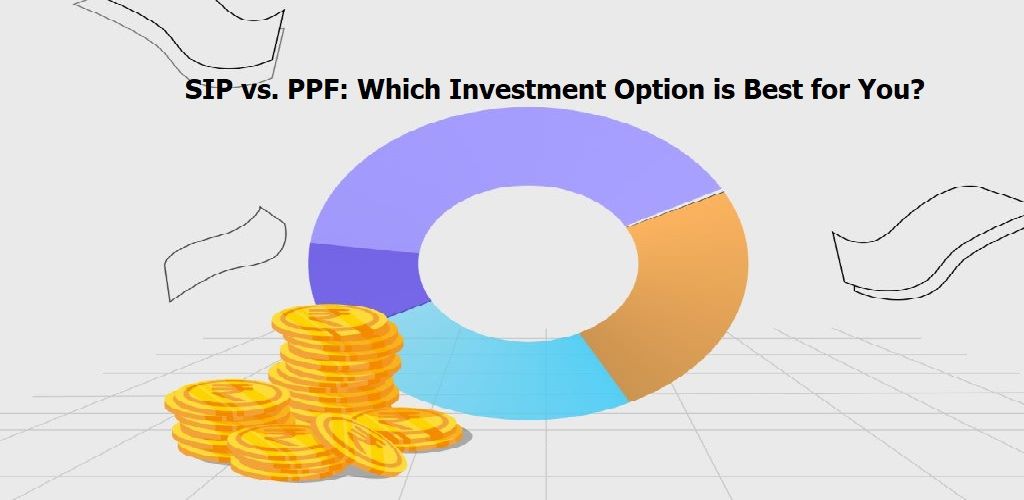In a fast-paced world, where financial stability and future planning are important, the Systematic Investment Plan (SIP) emerges as a valuable “Financial” tool to take care of your financial security. Whether you’re a seasoned investor or just trying to get into it for the first time, an in-depth understanding of the SIP is important.
Now, the question arises- What is SIP? Well, in simpler terms, it is a smart way to invest in mutual funds. In this plan, you pick a mutual fund you like, decide how much money you want to invest regularly and then invest that same amount at set intervals, like monthly or quarterly. It’s like putting aside a little money regularly to watch it grow over time.
Ready to make your first investment? If so, let’s dig deep into the systematic investment plan and its associated benefits.
What are the Different Types of SIPs?
Listed below are the different types of SIP investments that you should know beforehand.
- Fixed SIP
In this type of SIP, a fixed amount is invested by the investors at regular intervals, preferably monthly. This fixed amount remains constant throughout the SIP tenure which provides consistency in investment contributions.
- Flexible SIP
It is another popular form of SIP that is usually preferred by investors of all kinds. With this type of SIP, investors have the flexibility to increase or decrease the SIP amount or even skip the SIP installments without any penalties. This type of SIP offers adaptability to changing financial situations.
- Perpetual SIP
In this type of SIP, investors will have the flexibility to stop it whenever they want, otherwise it continues indefinitely. Unlike regular SIPs with a fixed tenure, perpetual SIPs have no predefined end date which means that they offer investors ongoing investment opportunities.
- Top-Up SIP
Another popular form of SIP is top-up SIP which allows investors to increase their SIP contributions periodically. With top-up SIP, investors can set pre-defined increments in their SIP amount at regular intervals which allows them to boost their investment over time and capitalise on increasing income or savings.
- Step-Up SIP
This is another common form yet beneficial form of SIP which offers a systematic increase in SIP over time. Investors can specify a predetermined rate of increase in their SIP amount at regular intervals, such as annually or semi-annually. This type of SIP helps investors align their investments with their growing income or financial goals.
- Multiple SIP
Lastly, multiple SIPs allow investors to invest in multiple mutual funds simultaneously through a single SIP account. Investors can allocate different accounts to various mutual fund schemes based on their investment preferences, risk tolerance, and financial goals. The major highlight of this kind of SIP is that it offers diversification and flexibility in portfolio management.
What are the Key Features & Benefits of SIP Investment Plans?
Here is the list of the key features and benefits of investing in SIP.
- Helps you save regularly
One of the first and foremost key features of investing in SIP is that it allows you to save money regularly, which means you’ll develop good financial habits. It allows you to set aside a portion of your income without affecting your current lifestyle.
- Provides Flexibility
Another major benefit of SIP investments is that you will have the freedom to increase or decrease the amount you invest at any time based on your financial goals.
- Easy & Convenient
There is no denying that investment in SIP is hassle-free and convenient. You can easily set up an SIP online with just one-time instructions. Once set up, your investments will automatically be collected without any additional effort from your side.
- Reduces Potential Risk
Another major highlight of SIP is that it spreads your investments in different funds, which means there is little to no risk associated with market volatility. On the other hand, investing a lumpsum amount at once can be risky as it exposes your capital to market fluctuations. Thus, SIP helps you navigate through uncertain times more effectively.
- Goal-Based Investing
Last but not least, SIP facilitate goal-based investing by allowing investors to align their investments with specific financial goals, such as retirement planning, education funds, or buying a house, or no matter what.
How do SIPs work?
SIP, or systematic investment Plan, is becoming increasingly popular among mutual fund investors in India for good reasons. It offers a disciplined way to invest without taking stress over market ups and downs.
With SIP, you can start investing with as little as Rs. 500 while some SIPs allow you to start investment with as low as Rs.100.
Let’s understand how it functions…
The moment you opt for one or more SIP plans, a fixed amount (whatever you like) is automatically deducted from your bank account and invested in your chosen mutual fund at regular intervals. At the end of each investment period, you’re allocated units of mutual funds based on their Net Asset Value (NAV).
Alternatively, you will have two options to invest; lump sum or in installments. The first option allows you to make a one-time investment in a fund and watch it grow over the next few years. On the other hand, monthly installments allow you to invest a small portion of money every month which gets deducted from your bank account and invested in a mutual fund on a fixed date. This continues until you stop it.
Things to Remember While Starting SIP
Planning to start an SIP? If so, let’s discuss the key aspects that you cannot overlook.
- Financial Goals
It is the first and foremost aspect that investors must take into consideration before making a call. No matter what kind of investor you are, It’s important to have a clear understanding of your financial goals. Determine what you want to achieve through your investments and the time frame you have in mind. This will help you select an SIP plan that aligns with your objectives.
- Risk Appetite
Another major factor to keep in mind is how much risk you can tolerate. Different SIP plans carry varying levels of risk. Choose a plan that matches your risk tolerance and investment preferences, whether you prefer conservative or aggressive investments.
- Investment Amount
In this aspect, you must select an amount that you are comfortable with and can afford regularly. SIPs allow you to start with small amounts, and you can gradually increase your investment over time. It’s essential to choose an amount that fits well within your budget.
- Duration of Your Investment
The last aspect that you need to consider before making the final decision is the duration of your investment. Short-term goals may require a shorter duration SIP, while long-term goals can benefit from a longer duration SIP. Align the investment duration with your goals to optimize returns.
Conclusion
So, there you have it! Investing in SIP offers a multitude of advantages and is a popular choice for many individuals. It is no secret that SIPs promote financial discipline by encouraging regular savings without compromising one’s lifestyle.
By considering the above-mentioned aspects, you can ensure that your SIP investment strategy is in line with your financial goals, risk tolerance, affordability, and investment duration. It’s always recommended to consult with a financial advisor for personalised guidance based on your specific circumstances.
Frequently Asked Questions
No, remember that not all SIPs are tax-free.
A SIP plan requires a minimum monthly investment of Rs. 100 before you can begin. The SIP investment plan does not have an upper investment limit.
Yes, you can skip the SIP amount for a particular month and continue it whenever you feel like doing it.







